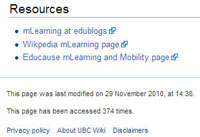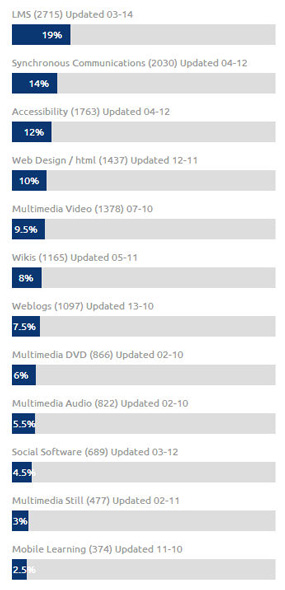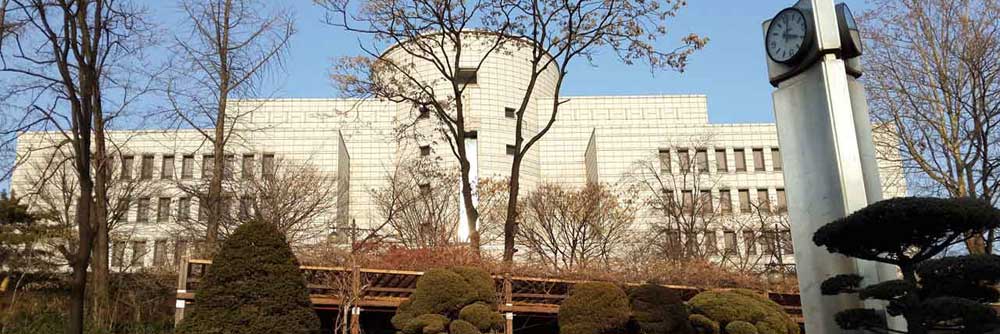Flight Path Précis
In my Flight Path, I outlined my experience with a multimedia writing class that I developed and shared some of the amazing results that my students produced. I also described how humbled I was that, if it had not been for concepts that I had recently learned in UBC MET courses, the outcomes for this class might have been decidedly less positive. I shared my enthusiasm for what Harvard Law Professor Lawrence Lessig refers to as “democratized technology” and indicated that, largely due to his advocacy, I was particularly interested in ETEC565A’s Unit on “UBC Copyright Requirements” and “UBC Copyright ‘fair dealing’” and how they relate to the module’s preceding discussions on Social Media.
Because of the due diligence required to comply with copyright law in creating both the Digital Story and Moodle Online Course Site, I can now look back in retrospect and say that, although I truly acquired some new knowledge in those areas (copyright and social media) and that this knowledge was not acquired in the way that I had expected, the process of learning it through the hands-on activities has made me a much more confident educator who now has a solid foundation upon which to correctly “promote and model digital citizenship and responsibility.”
eLearning Toolkit Experiences
My eLearning toolkit experiences were, in a sense, more qualitative than quantitative. As a MET student who came into the program with a lot of self-taught educational technology experience, I have already expended an inestimable amount of time with trying out new eLearning tools. As a result, I was already familiar with most of the items in the toolkit, their respective advantages/disadvantages, etc., and did not actually “do” many of the suggested activities. The technologies that most interested me were Social Software (because Web 2.0 and SNS technology is continuing to change lives), the Multimedia Video section (because I teach multimedia writing), Synchronous Communication tools (because I want to see if there is anything comparable to Google Drive and Google+Hangouts), and the Learning Management System section (because I am not entirely satisfied with the one I’m currently using).
As it turns out, my interests are, with a few exceptions very similar to most other MET students’ interests. How do I know this? I started by making an assumption that the statistics shown at the bottom of each page are accurate and current. For example, at the bottom of the Mobile Learning page, it shows that the page was last modified in late 2010 and that it has been accessed only 374 times. Interestingly, the most recently modified section was the LMS page (updated in March 2014).
For example, at the bottom of the Mobile Learning page, it shows that the page was last modified in late 2010 and that it has been accessed only 374 times. Interestingly, the most recently modified section was the LMS page (updated in March 2014).
There are a total of 9 different technologies included in the Toolkit, with multimedia technology being divided into four subcategories (still images, audio, video, and DVD). This breaks down into 12 distinct categories and  I was most interested in learning which pages have been drawing the most interest from MET students. To determine that, I added the page access counts for all 12 categories and came up with 14,574 total page accesses. I then calculated a rough percentage for each of the categories and those percentages are shown in the graph on the left. Of course, this is not a scientific study, but it is significant to note that, like most other MET students, I was mainly interested in Learning Management Systems, Synchronous Communications, Accessibility, Web Design, Multimedia Video, Wikis, and Blogs.
I was most interested in learning which pages have been drawing the most interest from MET students. To determine that, I added the page access counts for all 12 categories and came up with 14,574 total page accesses. I then calculated a rough percentage for each of the categories and those percentages are shown in the graph on the left. Of course, this is not a scientific study, but it is significant to note that, like most other MET students, I was mainly interested in Learning Management Systems, Synchronous Communications, Accessibility, Web Design, Multimedia Video, Wikis, and Blogs.
Also significant is the fact that the Mobile Learning and Social Software pages only attracted 2.5 and 4.5 percent of the total page accesses. This is significant because both mobility and social networking are rapidly growing technologies and one would expect that tech-savvy educators (like those of us in the MET program) would be wanting to become as knowledgeable as possible in those areas. Therefore, I was surprised to see them both so low down on the list.
Of course, my interpretation of this data may be over simplistic and erroneous. (I’m not a statistician.) The ETEC565M course on Mobile Education filled up very quickly when it was last offered, so it is entirely possible the low percentage of total page accesses in that category is misleading.
On the other hand, there can be nothing “misleading” about the “page last modified” dates and I am a little concerned that a few sections (Mobile Learning, Multimedia Audio, Video, DVD, and Weblog) haven’t been updated since 2010. Technological advancements occur at in incredible pace–particularly in mobility–and one would expect that Toolkit pages pertaining to the most rapidly advancing technologies would be updated the most frequently. Hopefully, this will be rectified soon.
Overall ETEC565A Experience
Although it has been difficult at times to keep up with the workload, that difficulty has nothing to do with the content and objectives of this course. Many of my colleagues in this course have been supportive, professional, and informative. I have found that, by reading other perspectives from people with backgrounds and philosophies that are different from my own, I have picked up some really great insights and, hopefully, imparted some useful information of my own.
However, one aspect of this and, so far, most online “Educational Technology” courses that I do not understand is the fact that the discussion forums are primarily text-based and the use of multimedia technology almost seems to be avoided. To be clear, this “avoidance” did not emanate from our instructor: on several occasions, we were invited to participate in real-time on-camera synchronous conversation and I was dissapointed to see so few colleagues join in such engaging and enlightening learning opportunities. On the right is a screenshot from one of our last get-togethers. 
With an enrollment of nearly 20 students, it’s surprising that only 3 of of us were able to attend and engage in a few minutes of face-to-face conversation. Full disclosure: although I was present for this online conference, I did arrive late and believe that I missed one that had occurred a week or so earlier.
This is purely speculation, but I wonder if there might be better turnouts to these video conferences if the Discussion Forums weren’t so heavily text-based. If there were some additional incentive for students to use the video recording technology that Natasha kindly demonstrated for the “Looking Back, Moving Forward,” I have a feeling that more students would show up at the interim video conferences. Although some sessions were recorded so we could watch asynchronously, I don’t think watching a video is equal to participating “live.” Just ask Lorne Michael, producer of Saturday Night Live, or any other “live” broadcast participants. There is a kind of synergy that emerges during live participation events that simply cannot be emulated or simulated during a video playback session.
![]() Also in reference to those text-based discussions, I found it interesting to discover that, in one instance, after I expressed disagreement with a certain opinion, I never again heard from that person for the duration of the course. Maybe my words came across as rather harsh. But, believe me, they were certainly not intended that way. I think this was mainly because the cold, un-nuanced medium of text-only discussion make it all too easy to a) misinterpret the true spirit of a dissenting opinion and b) react to the dissenting opinion by simply refusing to read or respond to any future posts made by the dissenter, even if many of his/her subsequent posts were supportive and full of genuinely positive feedback. In a class of nearly 20 students, it’s natural human nature for some folks to assume that “nobody’s gonna notice if I stop talking to this guy, so why bother responding to him?” However, as Michael Wesch might say, perhaps “we’ll need to rethink a few things”
Also in reference to those text-based discussions, I found it interesting to discover that, in one instance, after I expressed disagreement with a certain opinion, I never again heard from that person for the duration of the course. Maybe my words came across as rather harsh. But, believe me, they were certainly not intended that way. I think this was mainly because the cold, un-nuanced medium of text-only discussion make it all too easy to a) misinterpret the true spirit of a dissenting opinion and b) react to the dissenting opinion by simply refusing to read or respond to any future posts made by the dissenter, even if many of his/her subsequent posts were supportive and full of genuinely positive feedback. In a class of nearly 20 students, it’s natural human nature for some folks to assume that “nobody’s gonna notice if I stop talking to this guy, so why bother responding to him?” However, as Michael Wesch might say, perhaps “we’ll need to rethink a few things”
With the technology that most people can easily access today, I cannot fathom any good reason for synchronous or asynchronous video communication to not be a major component of “Discussion Forums” in an educational technology program. People can benefit so much from being able to see one another, and discern other participants’ tone, body language, inflection, and attitudes during sensitive discussions that may involve some disagreement. These are all key elements of basic human communication that simply cannot be perceived in text based posts. No matter how carefully one may type out his/her thoughts on a keyboard, that “text” is only “text” and its one-dimensional structure is severely limiting. In face-to-face learning environments, students’ learning and participation is not assessed purely on the basis of the number of notes they write to one another. So why, in the grading category of “Participation,” does there seem to be so much emphasis placed on text in these MET courses? Why should people who put a lot of thought, time and energy in their multimedia contributions be left wondering if they will be penalized because their “total post count” happens to be less than the total number of posts contributed by other folks who are fast on the keyboard and able to pump out more text-based posts?
Hopefully, participation assessment goes beyond the text-based discussion forums and includes initiatives that students undertake in other realms. For example, in the Moodle project, there were many instances where I was able to benefit from the excellent ideas that many colleagues were willing to share by making it possible for anyone to enroll in their courses and check things out. I learned a lot from those folks and, because of their willingness to open up their work and ideas to me and others, it began to feel like I was part of an informal “community of learners.” The individuals who made this possible were, in my opinion, the best participants.
It’s interesting that, for many of us, an individual assignment, in which we were not formally assigned to groups, evolved into a collaborative effort, with each of us checking out one another’s sites and borrowing ideas. For those of us who did this, I think this was a great experience of social learning (Wenger-Trayner n.d.) that could also be considered as a practice field that has laid the groundwork for many of us to become full-fledged members in communities of practice (Barab & Duffy n.d.) related to the field of Learning Management Systems. As I reflect on this very thought, I am even more convinced that, although Moodle’s interface is relatively old and unintuitive, having some experience and knowledge of it now gives me a lot of confidence about the notion of joining any LMS community of practice. And, as I said in my Moodle reflection, I may actually consider learning more about it and using Moodle in the future.
Next Steps
This brings us to the final component of this synthesis reflection. What technology will be a focus in my future career as an educator? The answer to that begins as soon as this course ends.
Near Term
Last week, the program coordinator for our department put out an “online course project call” for two teachers to develop the online component of a blended class. Fortunately, the course is one that I am very familiar with and one that I have been independently teaching as a blended course for years. Now, in order to save on labor costs and keep tuition as low as possible, the university has decided that this course should be downsized from 4 hours of in-class instructional time to only 2 hours per week plus 1 hour of online instruction.
Before starting to work on the proposal, I will use the SECTIONS framework (Bates & Poole 2003) and past student feedback to assess the technologies that I have already been using. At the same time, I will also seek more information on how my department envisions the online component. If they are interested in a series of PowerPoint lectures that are recorded in a classroom and a workbook that students are expected to use as they follow along with the lectures, then I will regrettably abandon the proposal and keep my free time focused on constructivism, social learning theory, and everything else I can learn in the UBC MET Program.
Assuming that my department confirms that their vision can accommodate modern constructivist pedagogy, my proposal will be largely influenced the New London Group’s “Pedagogy of Multiliteracies,” Barab & Duffy’s concepts about progressing “from practice fields to communities of practice and Wenger-Trayners’ “social learning theory”. I would therefore rely heavily on Web 2.0 technologies that would allow students to easily produce their own content and share it with one another.
For example, I might create an LMS page in which I embed a video tutorial that demonstrates several different types of gestures that should be used when giving speeches or presentations. Students would be expected to study the gestures, practice them according to the advice given in the tutorial, and then produce their own videos in which they give a 2 minute presentation that uses specified numbers and types of gestures. This would comply with several key criteria in the SECTIONS framework, including ease of use (because all Korean university students have smartphones with good cameras and/or webcams on the laptops) novelty (because people enjoy using their smartphone cameras these days), and interactivity (because students would be working on their individual presentations in pairs, with one person on camera while the presenter performs). After producing their video presentations, the pairs could then post them on the LMS and, using a Google Drive survey form, vote on the best video that demonstrates a specific kind of hand gesture. If I were fortunate enough to have my proposal accepted, I would then get to work on developing the content for September of 2014.
Long Term
Because of my age, I will be welcome to teach in Korea for a maximum of 4 more years. Then, according to Korean law, I will be required to either retire or leave the country. Of course, I plan to eventually return to Canada, anyway. But, in the meantime, I hope to use the additional income that my proposal would earn to (a) accelerate completion of the UBC MET program and (b) develop my own business in the field of educational technology. The first option (a) is obvious because that is what we are all planning to do. The second option (b) is a contingency plan because I must not make any assumptions about my employ-ability when I return to Canada.
Like it began, my lifelong educational technology interest will continue in the direction of providing solid educational opportunities to people who, because of physical, mental, or social disabilities, are less fortunate than others. This, again, is where I see so much value in Social Learning, Multiliteracies, and Communities of Practice–and the Web 2.0 (or 3.0?) technologies that enable advancement in those areas are the technologies that I will be using.
The following references do not render correctly in WordPress; therefore, a PDF file is available here.
References
Barab, S. A., & Duffy, T. M. (n.d.). From Practice Fields to Communities of Practice.
Bates A. W. & Poole, G. (2003). A framework for selecting and using technology. In A.W. Bates & G. Poole, Effective teaching with technology in higher education (pp. 75-108). San Francisco: Jossey-Bass. 4.
Cazden, C., Cope, B., Fairclough, N., Gee, J., Kalantzis, M., Kress, G., … & Nakata, M. (1996). A pedagogy of multiliteracies: Designing social futures.Harvard educational review, 66(1), 60-92.
Wenger-Trayner. (n.d.). WengerTrayner. Retrieved April 3, 2014, from http://wenger-trayner.com/
